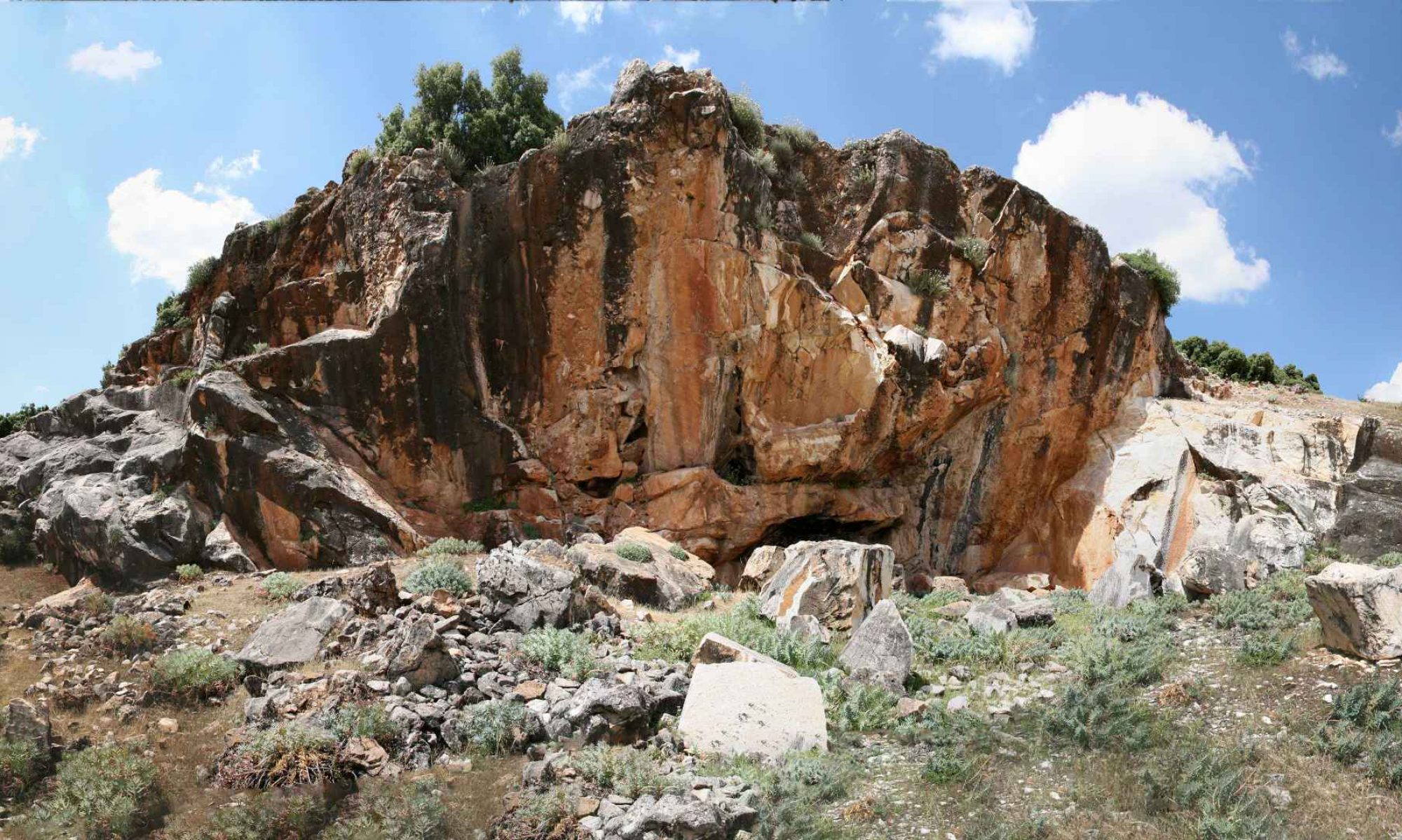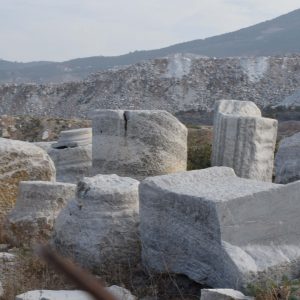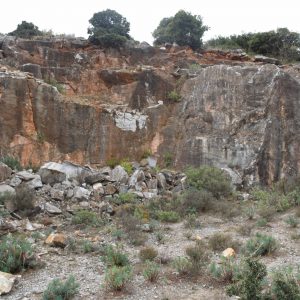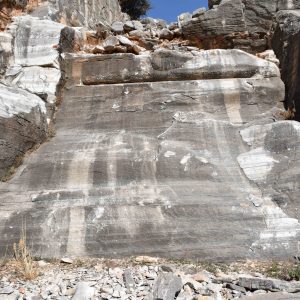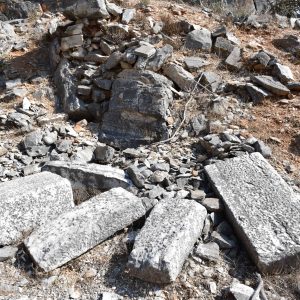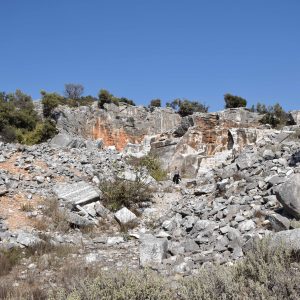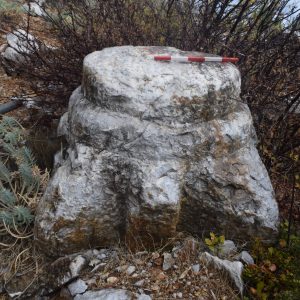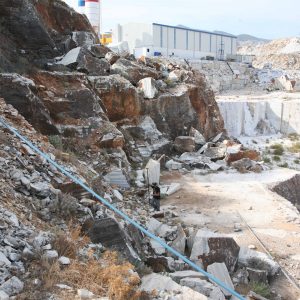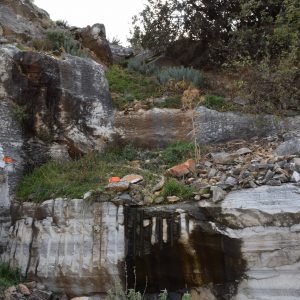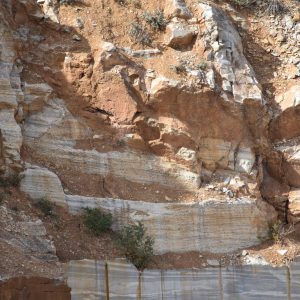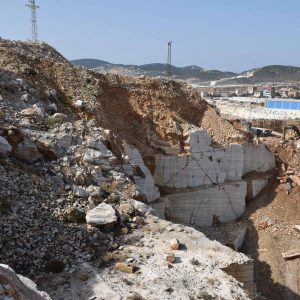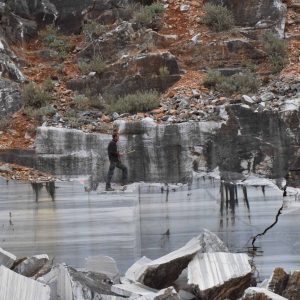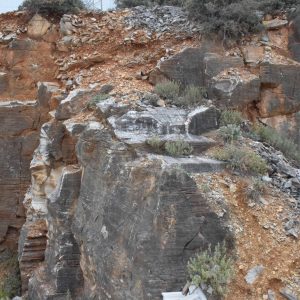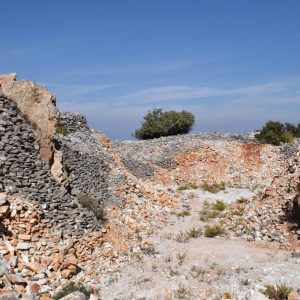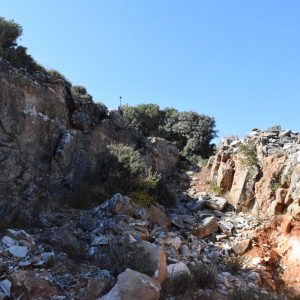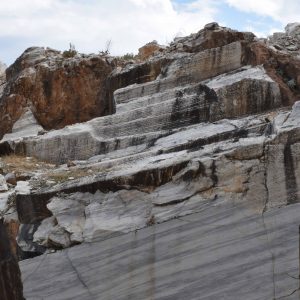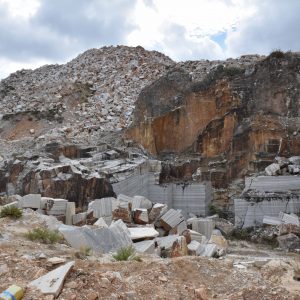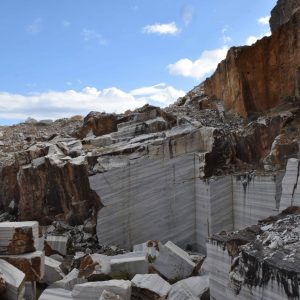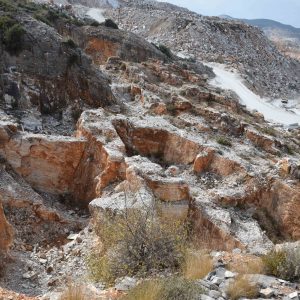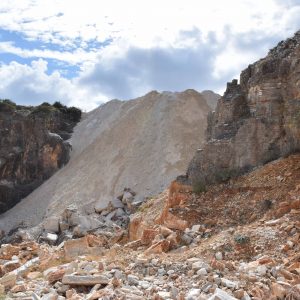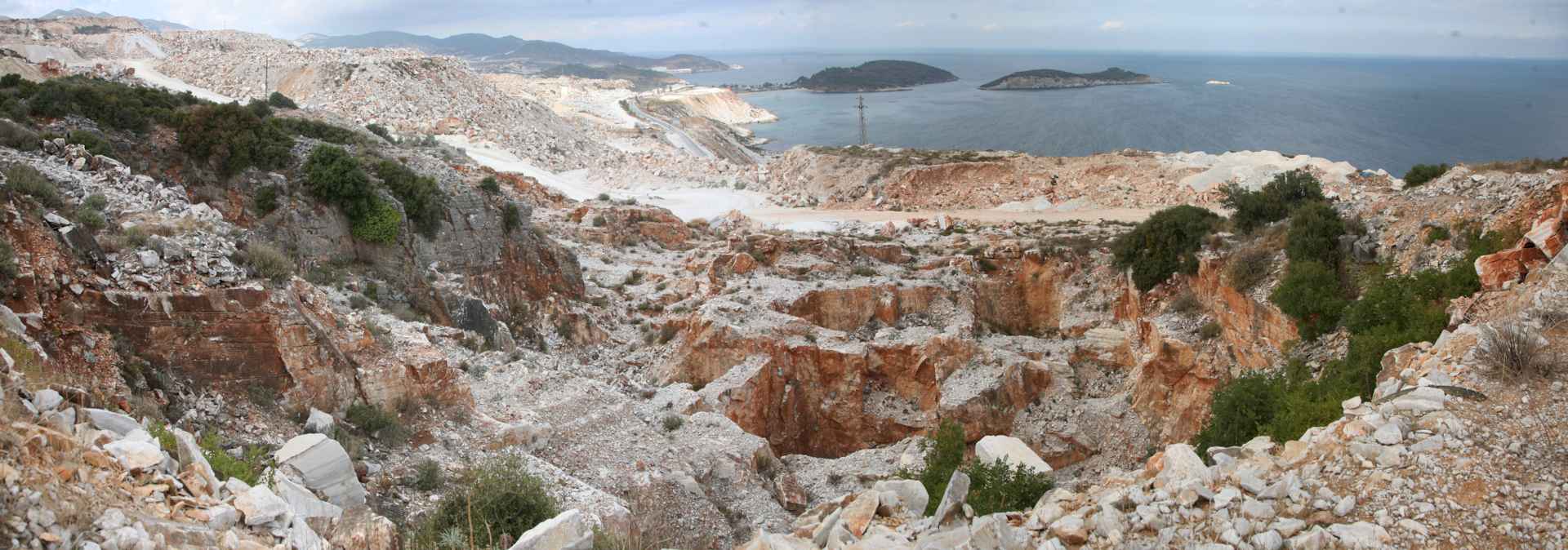
Ancient Prokonnesos (Marmara Island) was one of the largest sources for marble in antiquity. The quarries were possibly known as early as the Archaic period, when they where apparently used for building the first Artemision in Ephesos (Vitr. 10. 2. 15), and then as reported by Vitruvius (2. 8. 10) and Pliny the Elder (Plin. Nat. 36. 6) for the fourth century BC facade of the palace of Mausolos in Halikarnassos, Caria. In the Hellenistic period, the marble from Prokonnesos was most famously used for the Altar of Pergamon (Cramer et al. 2002). However, mass production and greatest extent of exportation out of Asia Minor started only in Roman times. Prokonnesian marble remained extremely popular in the Byzantine and Ottoman periods and the quarries of Marmara Island are still the largest operating quarries in Turkey.
In Roman times, the Prokonnesian workshops exported not only raw material, but also specialized in the mass and serial production of half-finished items, such as architectural elements, sarcophagi, and sculpture. Scholars’ interest in Marmara Island began in the nineteenth century, but only since middle of last century did systematic research of the quarries begin. Among the many scholars who have dedicated attention to the Prokonnesian quarries are Dario Monna and Patrizio Pensabene (1977), and primarily Nuşin Asagri who carried out the most accurate archaeological and epigraphic survey conducted to date (Asgari 1978; Asgari and Drew-Bear 2002) and also published some archaeometric data (Asgari and Metthews 1995). She registered hundreds of half-finished objects and gathered them together in open-air museums within the quarries. Marmora Asiatica’s fieldwork documented many other roughly worked architectural elements, such as columns, capitals, blocks, sarcophagi, and basins abandoned in the quarries, which were not previously recorded.
Asgari’s topographic map was modified slightly by Donato Attanasio who contributed the stable carbon and oxygen isotope ratios database (Attanasio et al. 2006; Attanasio et al. 2008). He also published results of electroparamagnetic resonance spectroscopy (EPR) investigation on Prokonnesian marbles (Attanasio 2003). A comprehensive minero-petrographic investigation has been, however, almost completely missing so far, or approached occasionally only generally (e.g. Antonelli et al. 2015). A few additional archaeometric studies that aimed to increase the reliability in determining the marble provenance ancient monuments, of which Prokonnesian was a part, were also performed (e.g. Barbin et al. 1992; Brilli et al. 2005).
The topography of the quarries encountered in 2016 differed enormously from the previous surveys by Asgari and Attanasio. Most of the ancient quarries visible at that time no longer exist, obliterated by intensive marble quarrying or engulfed by huge modern quarries, which have cut away a huge portion of the northern part of the island, visible even on Google Earth.
The northern part of the island, which we surveyed in 2016, was divided into seven sectors in one huge cluster 1, which covered approximately 18 km2. It was possible to document over sixty-one places of ancient exploitation and extend the topographic plans by Asgari and Attanasio more towards the west, where new ancient quarries have been discovered. Many of the ancient quarries, covered by thousands of tons of modern rubble, were not accessible at the time of Asgari and Attanasio’s surveys. Some of them have been unearthed or cleaned and reopened by modern quarrying enterprises. These new findings provided an opportunity to undertake a complete study of these rediscovered ancient quarries before modern exploitation erases them forever. Additionally, the Marmora Asiatica team documented previously undiscovered artefacts abandoned in the quarries as well as fifty-two ancient extraction sites; we scanned five of best-preserved quarries. Moreover, the western portion of Prokonnesos, today intensively exploited for its rich dolomitic white marble, was also considered (cluster 2).
References
- Asgari, N., 1978: ‘Roman and Early Byzantine Marble Quarries of Proconnesus’, in The Proceedings of the Xth International Congress of Classical Archaeology, Ankara – Izmir 23-30, 09, 1973. Ankara, 467–480.
- Asgari, N., Metthews, K., 1995: ‘The stable isotope analysis of marble from Proconnesus’, in Y. Maniatis, N. Herz, Y. Basiakos (eds.), Asmosia III Athens: Transactions of the 3rd International Symposium of the Association for the Study of Marble and Other Stones used in Antiquity. The Study of Marble and Other Stones Used in Antiquity. London: Archetype Publications, 123–129.
- Asgari, N., Drew-Bear, Th., 2002: ‘The quarry inscriptions of Prokonnesos’, in J. Herrmann, N. Herz, R. Newman (eds.), ASMOSIA V, Interdisciplinary Studies on Ancient Stone: Proceedings of the Fifth International Conference of the Association for the Study of Marble and Other Stones in Antiquity, Museum of Fine Arts, Boston, June 1998. London: Archetype Publications, 1–18.
- Attanasio D., 2003: Ancient White Marbles. Analysis and Identification by Paramagnetic Resonance Spectroscopy. Rome: L’Erma di Bretschneider.
- Attanasio D., 2003: Ancient White Marbles. Analysis and Identification by Paramagnetic Resonance Spectroscopy. Rome: L’Erma di Bretschneider.
- Attanasio, D., Brilli, M., Ogle N., 2006: The Isotopic Signatures of Classical Marbles. Rome: L’Erma di Bretschneider.
- Attanasio, D., Brilli, M., Bruno, M., 2008: ‘The Proprieties and identification of marble from Proconnesos (Marmara Island, Turkey): a new database including isotopic, EPR and petrographic data’. Archaeometry 50, 747–774.
- Barbin V., Ramseyer K., Decrouez D., Burns, S.J., Chamay, J., Maier J.L., 1992: ‘Cathodoluminescence of white marbles: an overview’. Archaeometry 34, 175–183.
- Brilli, M., Cavazzini, G., Turi, B., 2005: ‘New data of 87Sr/86Sr ratio in classical marble: an initial database for marble provenance determination’. Journal of Archaeological Science 32, 1543–1551.
- Monna, D., Pensabene, P., 1977: Marmi dell’Asia Minore. Rome: Consiglio Nazionale delle Ricerche.
